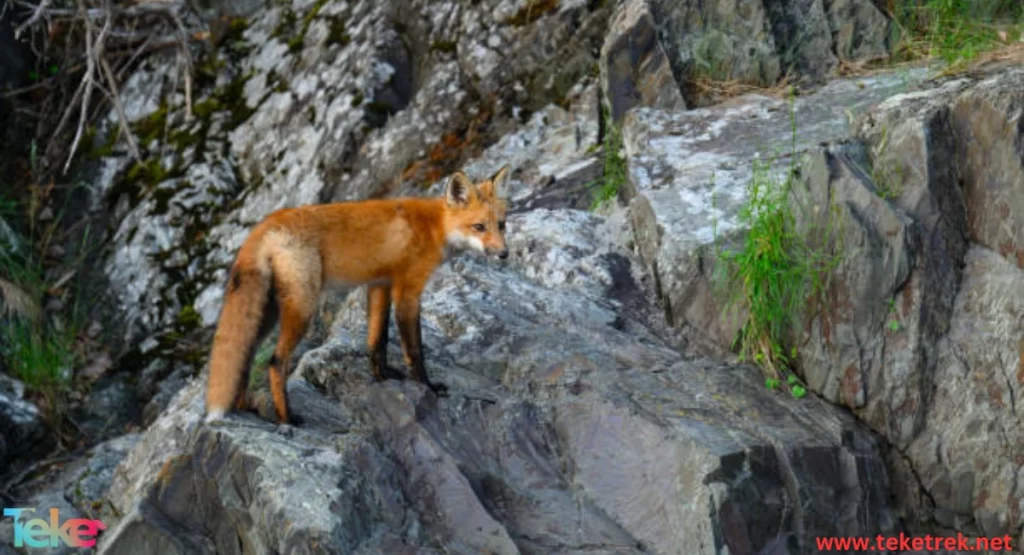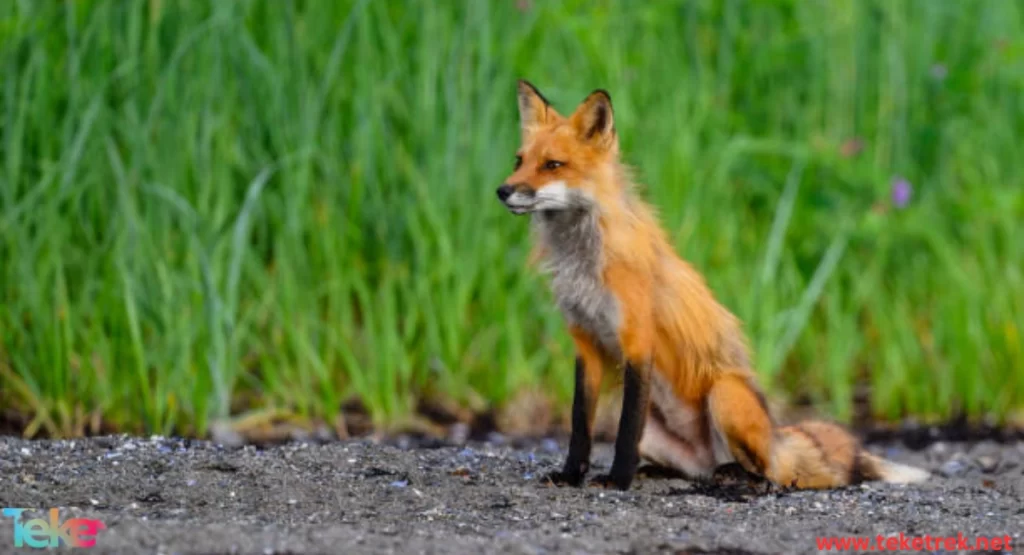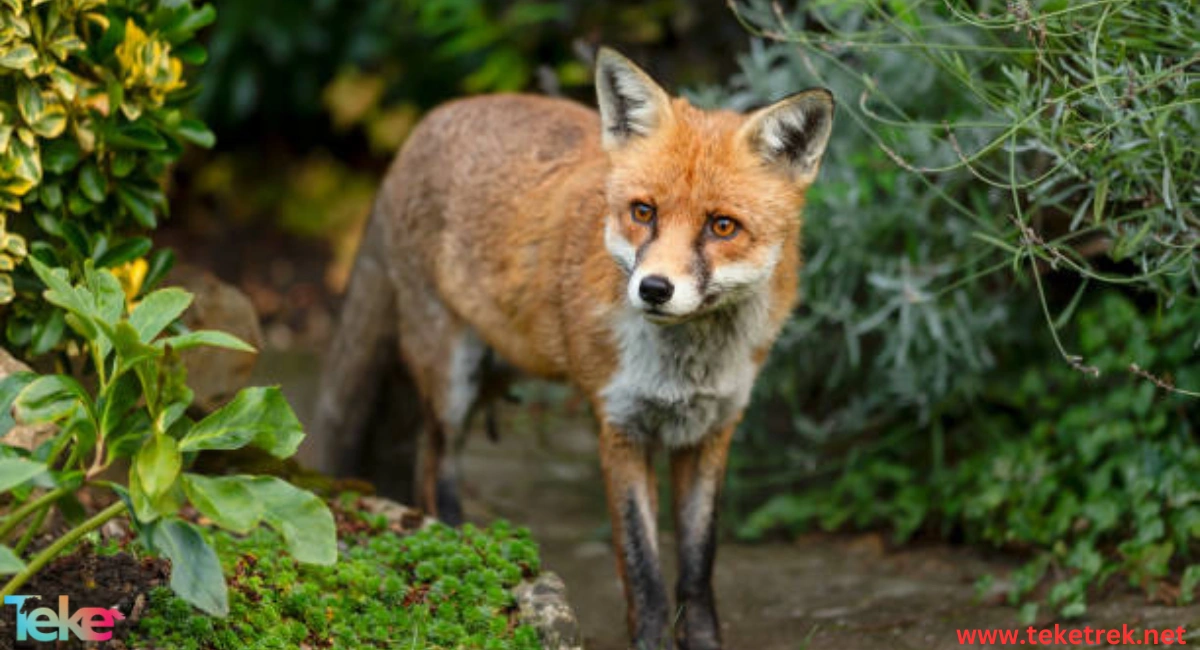It is considered one of the largest and most geographically widespread true fox species among carnivores.
In this article from teketrek., we will provide you with information about the Red Fox, including its diet, reproduction, species, whether it is endangered, and many other details.
Facts about The Red Fox
The Red Fox originated from small-sized ancestors in Eurasia and colonized North America shortly after the Wisconsin glaciation.
The Red Fox is part of the carnivorous mammals category, belonging to the Canidae family, which includes dogs, wolves, African wild dogs, and other fox species.
It is the most widespread member of this family worldwide and is scientifically known as Vulpes vulpes.
The Red Fox belongs to the phylum Chordata and the class Mammalia.

The Red fox description
The Color: The Red Fox is distinguished by its red color, ranging from orange to reddish-brown depending on the subspecies and habitat.
The nose: It has a long nose.
The legs: black legs.
The ears: large black ears.
The Red fox size: The Red Fox is one of the smallest predator species, the Red Fox’s snout is longer and narrower than that of any dog, a trait developed over time due to their habit of hunting rodents, the body of the Red Fox is not large; it closely resembles a dog’s body but stands out due to its long, bushy tail with a white tip.
The Wight: weighing between 7 and 10 kg.
The length: Its body length rarely falls below 1 meter, with a thick tail measuring around 30-40 cm.
What is the behavior of the Red Fox
The Red Fox is a solitary nocturnal animal that does not live in groups.
It is active at night, resting during the day and coming out at night to hunt.
The Red Fox establishes territories based on food sources and defensive capabilities.
Foxes can reach speeds of up to 46 km/h.
Their tracks on snow or soft ground resemble those left by a dog of similar size.
Red Foxes skillfully choose locations to build their dens, which have multiple exits located on sunny slopes, embankments, or elevated ground.
The long, bushy tail of the Red Fox provides an advantage in maintaining balance while chasing prey through trees and shrubs in forests for short distances up to 200 meters.
Red fox habitat
The Red Fox lives on all continents of the world except for the North and South Polar Regions.
Red Foxes prefer wild areas such as forests, tundra, and prairies that are difficult for humans to reach and are rich in vegetation. Recently, there has been an increase in the number of foxes in suburban areas.
They only need good soil to dig their burrows, with the best soil being deep sandy loam. It is not ideal to have groundwater on the surface or excessively compacted soil.
What is the Red fox diet
Red Foxes are primarily animals carnivorous , with invertebrates such as insects, mollusks, earthworms, and arthropods making up most of their diet.
They also eat some fruits such as berries, grapes, apples, peaches, and others. Vertebrates they feed on include rodents like mice and voles, rabbits, birds, as well as eggs, amphibians, small reptiles, and fish.
Reproduction stages of the Red Fox
The mating season begins in winter when several males gather and fight each other for a female.
The winner drives the losers away from its territory and mates with the female.
This phenomenon is also known as a fox wedding by hunters and forest dwellers.
The cubs are born in underground dens only once a year from March to May, with five siblings being born at once.
Red Fox cubs are born blind and do not open their eyes until the second week of life.
The parents take great care of the young, with the mother always around the cubs to protect them while the father goes hunting to provide food for the entire family.
In the first month, the cubs only feed on milk from their mothers, and starting from the second month, adult foxes take the cubs hunting to begin their first attempts on their own.

FAQs about Red Fox
What sounds do Red Foxes make?
Communication between the mother and cubs is through whining, and during mating season, barking can be heard, which is also used by the cubs alone.
In danger or during fights with each other, males make a kind of bark.
Which animals prey on the Red Fox?
Wolves, coyotes, golden eagles, as well as medium-sized and large macropods.
What is the origin of the red fox?
Recent genetic studies indicate that the first red foxes originated in the Middle East. From there, they spread across Eurasia, reaching Siberia, and eventually crossed the Bering Strait into North America.
What is the daily routine of a red fox?
The red fox is active throughout the year, primarily at night or during twilight, though it may sometimes forage during the day, especially when providing for its young. While they are capable swimmers, red foxes typically travel on land, following well-established paths.
How long is a red fox’s gestation period?
The red fox’s gestation period ranges from 49 to 58 years.
Why is it called red fox?
Because the color of its fur ranges from reddish brown to rusty red.
In conclusion, the red fox is important to note that the Red Fox is not an endangered species due to its ability to interact closely with humans.
It is one of the most widespread carnivorous animals in the world.
References:





